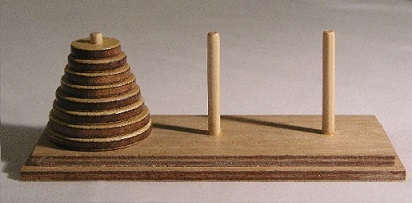

To move the non-smallest piece, there is only one legal move. With three pieces, you would move the smallest piece to the oppositeĮnd, then continue in the left direction after that. The chosen direction, move the piece to the opposite end, but thenĬontinue to move in the correct direction. The right if the starting number of pieces is even, to the left if the Piece, always move it to the next position in the same direction (to The difference between the unidirectional solution and the mono-directional version is the unidirectional solution doesn't specify an end position.Ī simple solution for the toy puzzle: Alternate moves between the This solution is a unidirectional version of the first iterative solution. Has anyone seen this description of the puzzle before?

You don't have to number the disks(Unlike solutions 1 and 3 and 4) The initial stack can be placed on any of the 3 pillars and still work without any adjustment to the rules needed.(Unlike solutions 2 and 3 and 4) These rules differ from other descriptions of the algorithm in that:

There are four plain English algorithms for the Towers of Hanoi Puzzle available on Wikipedia, but when I was first solving the puzzle, I came up with an algorithm that is different from any of the solutions I have seen.


 0 kommentar(er)
0 kommentar(er)
